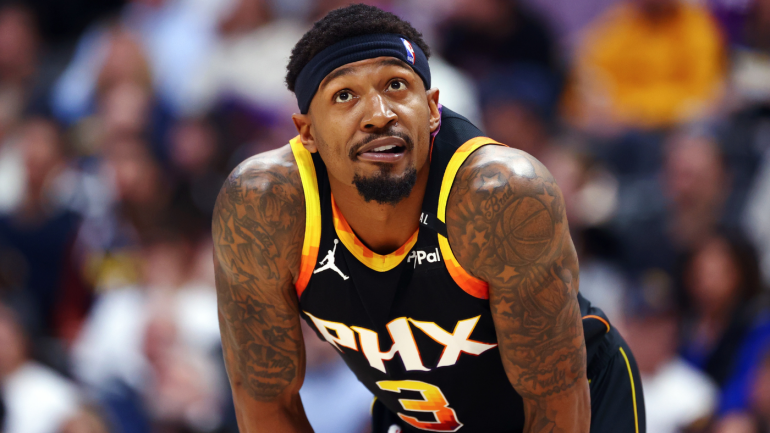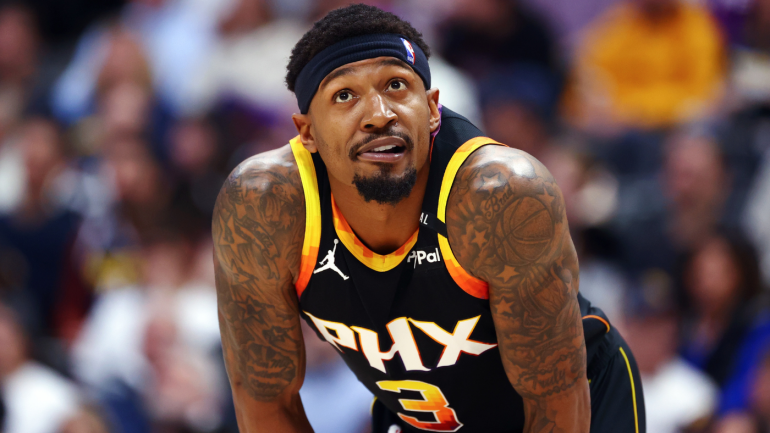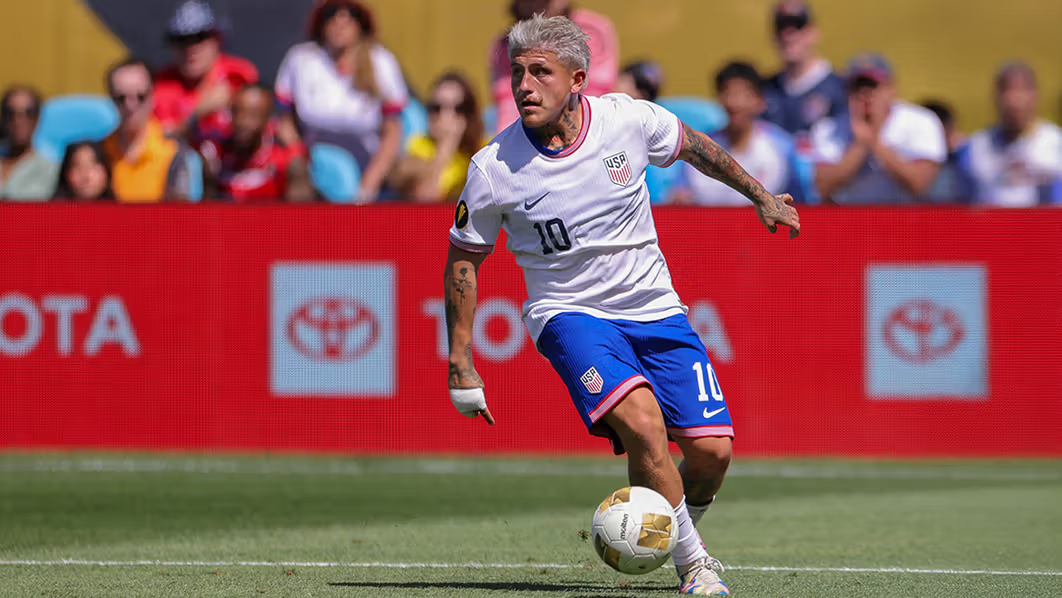Bradley Beal Buyout Explained: The Phoenix Suns once believed they had assembled a championship-caliber trio when they acquired Kevin Durant and Bradley Beal to join Devin Booker. But two seasons later—without a single playoff win to show for it—that vision has collapsed. The teardown began in June with Durant’s trade to the Houston Rockets, and now, it appears to be continuing, as reports indicate the Suns are negotiating a buyout of the remaining years on Beal’s massive contract.
There’s a crucial distinction between these two moves. The Durant trade brought back tangible assets—Jalen Green, Dillon Brooks, and Khaman Maluach—players with the potential to contribute meaningfully to Phoenix’s rebuilding efforts. A Beal buyout, on the other hand, brings no return. Instead, it leaves the Suns on the hook for a significant amount of dead money, a financial burden they seem willing to accept just to move on.
So the obvious question is: Why?
Why are the Suns so eager to part ways with Beal that they’re willing to pay him most of what he’s owed just to walk away?
Let’s take a closer look at this puzzling situation—what it means for Beal, for Phoenix, and where the veteran scorer might land next.
When did the buyout rumors first start?
It’s important to note that the talk of a Bradley Beal buyout isn’t a reaction to anything that’s happened this offseason—it’s been brewing for months. Rumors began circulating as early as the trade deadline. Back in April, Suns insider John Gambadoro stated emphatically, “Bradley Beal, come hell or high water, is not gonna be on this basketball team next year.”
Given Beal’s no-trade clause, there was never a guarantee Phoenix could find a deal. The only surefire path to parting ways was a buyout or waiver.
At this point, it’s fair to question whether a buyout is truly the right move. Yes, Beal is overpaid, and his no-trade clause has clearly complicated things for the Suns—but he’s still a productive player. Arguably, he’s the second-best talent on Phoenix’s roster in the post-Durant era. The Suns could have explored alternative roles for him—perhaps as a high-impact sixth man behind Devin Booker, or even in a starting backcourt tandem, where an increased offensive role might have helped him regain form.
While we’ll break down the financial implications of a buyout in detail below, it’s worth noting that most of the cost-cutting goals Phoenix is aiming for could have been achieved through other, less drastic options.
All of this suggests that the Suns’ decision may not be entirely rooted in rational, basketball-driven logic. It could stem from behind-the-scenes issues, lingering frustration over Beal’s no-trade clause, or simply a desire to symbolically close the book on a failed chapter in franchise history. Whatever the motivation, Phoenix appears locked into a singular course of action—one that could have serious long-term consequences.
To be clear, this does not appear to be the team’s most sound basketball move. We’ll break down the reasons why below, but it’s important to understand: this feels more emotional or symbolic than strategic.

So what does Phoenix gain through a buyout?
As it stands, the Suns have a $218.6 million payroll, putting them well over both the NBA’s luxury tax threshold ($187.9 million) and the second apron ($207.8 million). This marks their second consecutive season exceeding the second apron—triggering serious long-term consequences. Not only would their 2033 first-round pick be frozen, but if they remain above the second apron again in any of the next three seasons, their 2032 first-round pick would automatically drop to No. 30 overall.
And that’s not the only penalty. The Suns are also repeat taxpayers, and under the new CBA, the luxury tax rates have increased sharply—especially for teams that routinely exceed the cap. With just 13 players under contract, Phoenix is facing a staggering $385 million total bill for a roster that hasn’t delivered results.
In short, this level of spending is unsustainable—and the financial pressure to cut costs is mounting quickly.
The Suns could technically waive Bradley Beal outright, but doing so would still leave them on the hook for the two remaining supermax years on his contract—a financially unworkable option. Instead, they’re pursuing a buyout agreement. In this scenario, Beal would agree to return a portion of his remaining salary in exchange for his freedom to become a free agent and sign with a team of his choosing.
Typically, in buyouts, the player forfeits roughly the amount they expect to earn from their next contract. This allows the original team to save a bit of money, while the player essentially breaks even—trading salary security for the ability to choose their next destination.
The challenge for Phoenix is timing—free agency is already well underway, and most teams have spent the bulk of their cap space. That means Beal likely wouldn’t command a significant deal on the open market right now, limiting how much salary he could give back in a buyout. In turn, that also limits how much the Suns would actually save.
To make the move more financially viable, Phoenix is looking to go a step further by combining the buyout with the NBA’s stretch provision. This rule allows teams to spread the remaining guaranteed salary over twice the number of years left on the contract, plus one extra. In Beal’s case, rather than paying out the deal over two years, the Suns would spread the payments across five seasons.
It’s the same financial maneuver Milwaukee recently used to unload Damian Lillard’s contract and create the flexibility to sign Myles Turner.
But there’s a complication. Under league rules, teams can only have up to 15% of the salary cap tied up in stretched contracts at any given time. The Suns already have $3.8 million in stretched money committed to Nassir Little and E.J. Liddell, which limits their flexibility.
If Phoenix were to waive Beal without any salary concession on his part, stretching his full contract would push them past that 15% cap—making it legally impossible. To stay within the limit, Beal would need to forfeit approximately $13.9 million from the $110.8 million still owed to him. That would bring the remaining payout to about $96.9 million, spread over five years—essentially paying nearly $97 million just to remove him from the roster.
Stretching Beal’s contract would immediately reduce his cap hit for next season from $53.6 million to just $19.4 million. That $34 million drop would be enough to bring the Suns below the luxury-tax threshold altogether. By staying under the tax line this season—and potentially next—they could avoid the second apron penalties, such as the freezing of future draft picks, and even reset their repeater tax status under the new CBA.
In short, this financial maneuver could provide significant long-term relief. That’s the driving force behind Phoenix’s push to finalize a buyout and stretch arrangement.
That seems pretty shortsighted, doesn’t it?
In short—yes, the Suns would see meaningful short-term financial relief. But the trade-off is significant: they’d be committing to three additional years of dead cap tied to Beal, keeping $19.4 million on their books annually through the 2029–30 season.
Compare that to Milwaukee’s recent move with Damian Lillard—they used similar financial flexibility to upgrade their roster by adding Myles Turner. Phoenix, on the other hand, wouldn’t be improving its roster right away. This move is less about building a contender and more about hitting the reset button on their luxury tax obligations.
There’s some short-term value in this approach, but Phoenix’s long-term flexibility is already limited. The Suns have no remaining tradable first-round picks and are projected to carry about $170 million in salary for the 2026–27 season—and that’s before re-signing restricted free agent Mark Williams, who cost them two first-rounders to acquire. With the salary cap expected to rise only modestly, they’ll likely be over the cap and restricted in free agency.
Had they simply ridden out the final two years of Beal’s deal, they’d be off the hook by the summer of 2027. But by stretching his contract, they extend that financial burden three additional years, tying up cap space during what could be pivotal seasons—either to build around Devin Booker or prepare for a rebuild if they move on from him.
Stretching Beal may have been the most straightforward path to immediate financial relief, but it wasn’t the only option. The Suns had several alternative routes—even if they offered smaller savings. For instance, the Durant trade actually increased their payroll, and they chose to pick up Vasilije Micić’s $8.1 million team option to help match salaries in the Mark Williams deal, rather than letting it expire.
They also could’ve explored trading role players like Grayson Allen or Royce O’Neale to shed salary. Even a simple buyout with Beal, without using the stretch provision, would have saved them $13.9 million over two years—a meaningful cut. While completely avoiding the luxury tax might have been unrealistic, getting below the second apron was a plausible goal with smarter, more measured moves.
Instead, the Suns seem determined to move on from Beal at any cost. And while that decision may offer short-term relief, it’s likely to carry a long-term price—just like many of the moves made under owner Mat Ishbia. From trading for Kevin Durant just days after taking over, to aggressive roster reshuffling, Ishbia’s approach has often prioritized the present over future stability. It’s already come back to bite the franchise, and Beal’s situation may be another chapter in that pattern.
But now that Phoenix is pushing him out—what’s next for Beal?
Where is Beal going to end up?
Much like Damian Lillard, Bradley Beal isn’t in a position where money is the priority. With the Suns still set to pay him a significant sum, he has the flexibility to sign for a lower salary in order to join a team that offers the right fit or opportunity. Don’t be surprised if he already has a destination in mind once the buyout becomes official. As of now, five teams have emerged as the most likely suitors.
- The Heat have been linked to Beal in past transaction cycles. They have the full mid-level exception ($14.1 million) still at their disposal, though they only have around $11.1 million in first-apron hard cap space, and more likely, they’d want to stay below the luxury tax, which would cap their offer at around the $5.5 million in room beneath it they currently have.
- The Bucks already took a major swing by bringing in Turner. Beal could replace Lillard as their high-scoring guard. The Bucks have already used most of their cap room mid-level exception, so practically speaking, he’d be signing for the veteran’s minimum ($3.9 million for a player with at least 10 years of experience like Beal) unless they make other moves that open up money.
- The Nuggets have revamped their bench this offseason, but still have their full mid-level exception to spend. However, they’re only $5.9 million below their first-apron hard cap, so that’s as much as they could offer. He’d be a tad redundant with Tim Hardaway Jr. in place, but think of how disastrous Denver’s bench has been in recent years. If the Nuggets can get a player this talented at this price, they should do it and figure out the fit later.
- The Clippers badly need a secondary creator. Their offense struggled mightily whenever James Harden sat last year. They have around $5.3 million left on their mid-level exception after signing Brook Lopez. Keep in mind, the Clippers have owned the buyout market in recent years. Nic Batum, Reggie Jackson and Ben Simmons have all come to the Clippers following buyouts. For whatever reason, this is an area in which they’ve tended to thrive.
- The last thing the Lakers need is more offense, but they’ve never been the sort of team to turn down star power, and great players are often drawn to them. They theoretically have the $5.1 million bi-annual exception available to them, but their bizarre decision to pay Jaxson Hayes more than the minimum deprived them of the hard-cap flexibility they’d need to actually use it. So, like the Bucks, they’re functionally operating with the minimum unless further moves change that.
These are the teams most frequently mentioned, but realistically, any team with an open roster spot and the ability to offer the minimum salary could be in the mix. In Phoenix, Beal was paid $50 million despite playing at a $20 million level—clearly an overpayment. Still, a player of his caliber is valuable, especially if he can be acquired at or near the minimum. Expect plenty of teams to express interest, and ultimately, the decision will come down to what Beal is looking for in his next destination.
If Beal’s priority is getting a bigger role, the Bucks make a lot of sense—they urgently need a high-scoring guard now that Lillard (and Khris Middleton) are gone. If location matters most, Los Angeles is usually the top choice, with New York often a close second. Having spent most of his career in Washington, a team in the Northeast might also appeal to him for family reasons—especially since his family was reportedly happy in Phoenix, so that could be an important consideration. And if winning is the key factor, Denver stands out thanks to having one of the best players in the NBA.
Almost any team could be a possibility—it really comes down to what Beal wants. Of course, two years ago, his no-trade clause limited his options, and he ended up in Phoenix, which didn’t go well. Hopefully, the lessons he’s learned since then will guide him to a better situation this time around.


